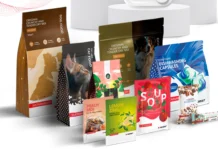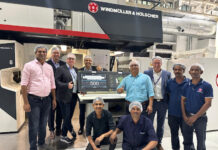The Bobst stand at Plastindia was a busy one with visitors from various countries. Although no machine was displayed, the company promoted solutions for flexo printing, gravure printing, lamination, extrusion coating and lamination, coating and metallizing.
Designed for wide web processing, Bobst’s vacuum coating and metallizing machinery provides minimal downtime at high speeds. The General K5000 metallizer has been a popular choice in this segment. Talking about the response at Plastindia, Nilesh Pinto, senior sales manager, business unit, webfed, Bobst India said, “The start of the event was very good with the second day being very busy. We have received all kinds of visitors, from very small to very big. We also met with people who want to diversify into the flexible packaging business. ”He added that the number of visitors seen at the event point to the fact that there is a high degree of optimism in the industry. “We generated lot of strong leads and had concrete discussions with potential customers. Overall, it was a great show for us,” Pinto added.
In the CI flexo printing segment Bobst offers cutting-edge technology, varied repeat lengths and medium to super wide printing widths. The models ofthe flagship F&K 20SIX platform for flexible material deliver high quality printing, minimize waste and energy consumption. In the rotogravure printing segment Bobst’s Rotomec 4003 platform provides high quality and efficiency. For laminating, Bobst’s multi technology platform CL 850/CL 1000 provides a solvent-less application configured to be cost-effective and productive for a specific requirement.
The company’s range of Rotoextruder extrusion coating and laminating lines are usually custom-built and are configured as single ortandem lines forflexible packaging or paper and board processing. For specialty coating, Rotosil, Rotomelt, Rototacky and Rotocoat production lines provide flexibility in choices in coating technology.











